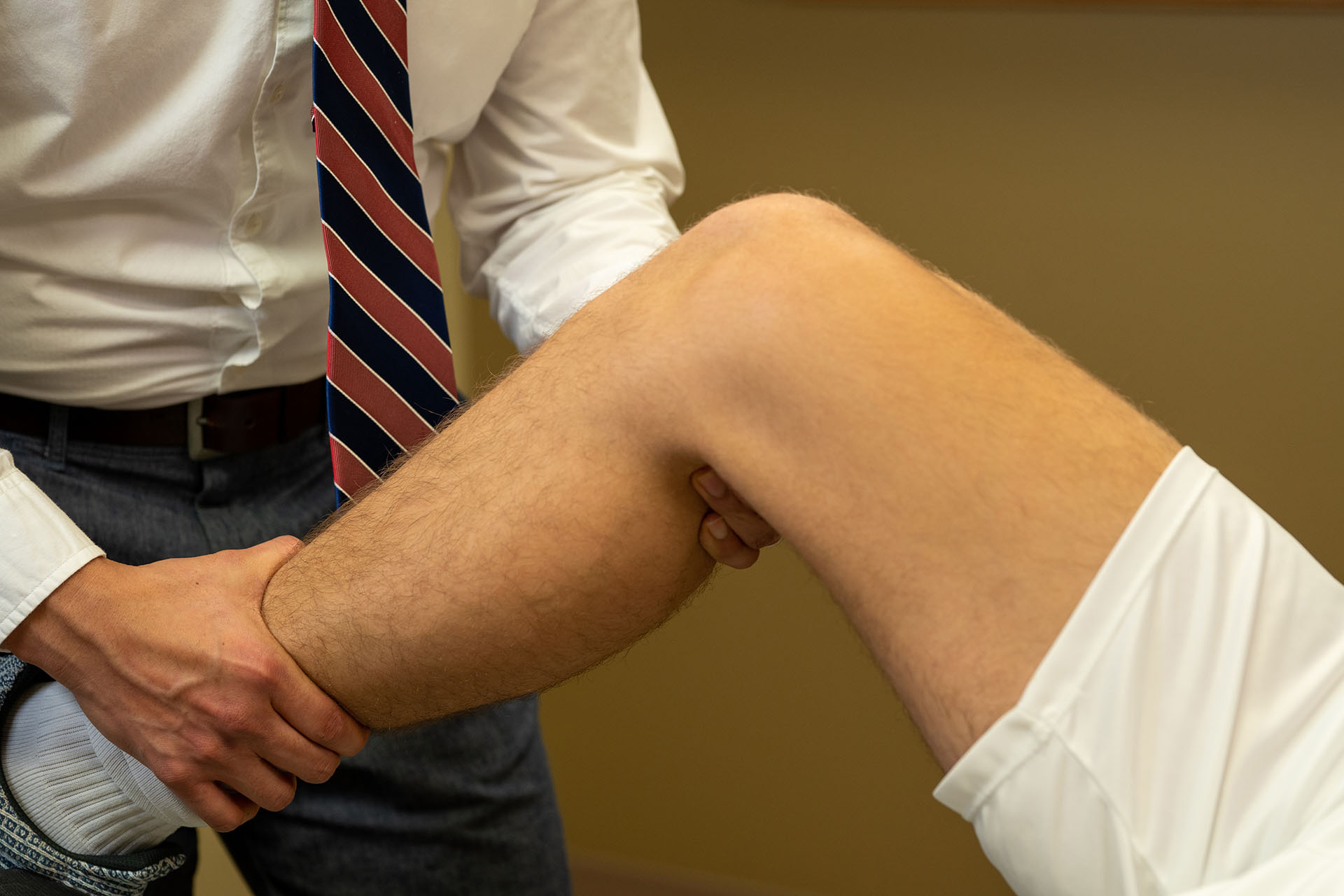ACL Reconstruction
Are you suffering from a torn anterior cruciate ligament (ACL)? At MD West ONE our specialists are trained to perform ACL reconstructions. This procedure repairs damaged anterior cruciate ligaments (ACL tendons) by replacing existing damaged ligaments and tendons with new tissue.
Your anterior cruciate ligament is a vital component in your knee. When functioning correctly, it stabilizes your knee joint and keeps your knee from hyperextending. Painful tears in the ACL tendon can occur during activities that involve sudden movements. These can occur in sports like football, basketball, soccer, gymnastics, and downhill skiing.
During ACL reconstruction, a surgeon removes the ACL tendon. Then they use tissue procured from a different part of your body or a donor. Typically the procedure is done as an outpatient procedure and involves minimally-invasive surgical technology.
The ACL surgeons will be able to provide you with a more thorough breakdown of the procedure.

Why is my surgeon recommending ACL reconstruction surgery?
ACL repair surgery can help return your knee to pre-injury functionality. The surgery can help restore stability and prevent further knee structure injury.
Not all ACL tears require knee reconstruction surgery. Your doctor will only recommend surgery if other options, like physical ACL rehabilitation, are not sufficient for healing.
Your doctor may recommend ACL surgery if you meet the following criteria:
- Your knee is unstable due to a completely torn ACL
- Your ACL injury has not improved after ACL rehabilitation
- If you rely on your knee strength and stability for sports or your occupation
- Have severe knee damage in areas like your meniscus, cartilage, or other related tendons or ligaments
- Experiencing quality of life issues related to a chronic ACL deficiency
- You can undergo intensive physical therapy following ACL surgery
You may not be the right candidate for ACL reconstruction surgery if:
- If you have a minor ACL tear that will heal with rehab and rest
- Do not participate in activities such as sports or occupations that require knee stability
- Can give up activities that require a stable knee
- Can complete a knee stabilization rehab program
- If you have other medical problems that make the procedure dangerous
Only a doctor can diagnose and recommend treatment.
Procedure
ACL reconstruction typically takes less than 120 minutes to complete. All-in-all, the ACL repair procedure takes four hours when you include time spent waiting for the anesthesia to wear off.
Generally, your surgeon will follow these steps:
- The process begins with your doctor administering general anesthesia, which allows you to undergo treatment without experiencing pain or consciousness. You may also receive regional anesthesia in some cases.
- Your surgeon creates small incisions around your knee to insert special surgical instruments.
- Then your surgeon uses arthroscopic instruments to remove your torn ligament.
- Next, your surgeon will prepare the procured tendon. If you are opting to use a grafted muscle in your body, the surgeon will remove it during this time.
- Your surgeon creates tunnels in your bone to anchor the new tissue.
- Then they secure the new ligament with screws or other devices. These attach the new ligament in place.
- Finally, your surgeon sutures your incisions closed and covers the area with dressings.
Our ACL surgeons offer two methods of performing ACL reconstruction:
Hamstring Technique - In a hamstring ACL reconstruction, an incision is made below the knee where semitendinosus and gracilis tendons are separated from the hamstring muscle - but left connected to the tibia then braided together to form an "autograft" which will be used to replace the damaged ACL.
Patellar Tendon Graft Technique - In a patellar tendon ACL reconstruction, an incision is made in the front of the knee to access the patellar tendon that will be used as a graft to repair the damaged ACL.
Your ACL surgeon will determine the most appropriate treatment for your condition.
After Surgery
You will be able to go home following your surgery. You may need to protect your graft by wearing a knee brace or splint.
Make sure you control swelling and pain following surgery. Apply ice, keep your leg elevated, and rest your knee as much as you can. It is also essential to change your dressings at regular intervals.
During your recovery, you may experience pain. Over-the-counter drugs such as ibuprofen (Motrin IB, Advil, etc.), acetaminophen (Tylenol), and naproxen sodium (Aleve), will help alleviate this symptom.
Your doctor may prescribe stronger medications. If your doctor prescribes opioids, be aware that these are habit-forming.
Improve your ACL surgery recovery time by strengthening the muscles around your knee. Attending regular physical therapy sessions can help recover your muscle flexibility. A trained physical therapist will be able to supervise your exercises and provide consultation on your recovery.
Even in ideal circumstances, recovery can take about nine months. It may take 12 months or more until an athlete can return to sports.
Call your physician immediately if you experience intense pain or aggravate the incision.


Risk Factors
Whether you are receiving surgical, non-surgical, or minimally-invasive treatment, all procedures have a certain amount of inherent risk. That said, ACL reconstruction surgery is relatively harmless.
Some complications that may arise from surgery include:
- Numbness as well as infection in the surgical area
- Structural damage to blood vessels, nerves, and structures related to and within the knee.
- Blood clots in the leg
- Complications with the tensile strength of the graft tendon
- Screws and related medical equipment may cause issues and require removal
- Not a complete restoration of leg function and limited range of motion
- Painful grating of the kneecap as it moves against the femur
- Experiencing pain when kneeling
- Repeated injury to the graft is complicated and typically less successful than the first surgery
